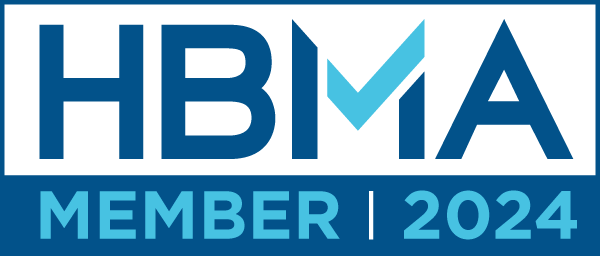You Can’t Manage What You Don’t Measure
Eliminate Coding Errors, Measure Claim Success Rate, Collection Time, and Cash Flow.
Evidence-based medicine from clinical research is fairly standard in the quality healthcare. Yet not everyone takes the time of effort to apply the same systemic approach when managing medical revenue cycles. Implementing and tracking Key Performance Indicators (KPIs) will help you understand your billing efficiency and identify improvement opportunities. This is especially important when it comes to claims submission. Let’s look at a few of the most important financial KPIs you should be tracking to optimize your medical practice revenue cycle and improve your bottom line.
Why Use KPIs?
Using Key Performance Indicators (KPIs) in medical revenue cycle management can help healthcare organizations track and improve various aspects of their financial performance. Some benefits of using KPIs include the following:
- Improved financial performance: KPIs can help identify areas where an organization is underperforming and take steps to improve revenue. Better decision-making: KPIs provide data and metrics that can be used to make informed decisions about how to improve financial performance.
- Increased transparency: KPIs can help make financial performance more transparent, which can help increase accountability and improve communication among stakeholders.
- Enhanced compliance: KPIs can be used to track compliance with various regulations and guidelines, which can help organizations avoid penalties and fines.
- Improved patient experience: KPIs can be used to track patient satisfaction and other aspects of the patient experience, which can help organizations improve care and increase patient loyalty.
Training: Get Everyone Onboard
Your staff needs to understand the purpose of each KPI. Training should also include instruction on properly using all necessary tools to measure performance and interpret the results. Once staff has been trained, it is important to have regular meetings where performance is discussed. In addition, staff should be encouraged to provide feedback on what they are seeing and discuss any issues or concerns. The more open the dialogue, the more opportunity there is for improvement.
Front Desk: Collect the Correct Patient Information
Front office staff is more or less the gatekeepers to all necessary patient information, reason for their visit, demographic data and verifying insurance coverage. To aid in this process, choose a Practice Management system that can connect with payer systems to validate patient benefits eligibility, determine coverage, and calculate patient responsibility. Obtaining pre-authorization for medical procedures from insurance payers, particularly for procedures beyond primary care physician visits, is crucial for successful registration.
Critical KPIs
Track, Measure, then Eliminate Coding Errors
Coding errors can be a major source of lost revenue for medical practices. Coding errors occur when incorrect codes are assigned to procedures, resulting in decreased reimbursement. It is important to have accurate coding for accurate billing and proper reimbursement.
The American Medical Association (AMA) releases updated coding guidelines each year, so it is important to make sure that you are up to date with the latest coding information. Additionally, ensure that your medical management and billing system automatically updates with new codes whenever they become available. If you haven’t already, invest in software programs that can check codes against the current coding conventions. This will help to ensure that codes are entered correctly and provide quick and easy access to the latest coding information.
Medical codes are not the only reason insurance claims are rejected. Other factors that may cause an insurance claim to be rejected include incomplete paperwork, incorrect patient or provider information, insufficient documentation of services, non-covered services, or exceeding the plan’s benefits.
Measure Claim Rejection Rate
It is essential to track the number of claims your medical practice submits that are rejected. The claim rejection rate measures the percentage of claims that were denied by insurers, as opposed to accepted and paid.
This metric provides insight into how well your practice is doing in terms of coding and accuracy. A high rejection rate means that many claims are not being accepted, resulting in lost revenue and delays in payments. Understanding the reasons for a high rejection rate is key to fixing the issue and improving your practice’s financial performance.
How Does Your Practice Compare to the National Average
The national average for first-time approval of medical claims is around 83%. To assess your practice’s performance compared to the national average, you can compare the total number of claims submitted to the total number of claims that were successfully approved during a certain time period. For example, if you submitted 200 claims and 180 of them were approved on the first submission, your first-time approval rate would be 90%, which is above the national average.
Take the steps to address any issues that could be causing a lower-than-average approval rate. This includes reviewing and revising coding procedures, implementing more stringent training programs for staff, and keeping more up-to-date on industry changes. Taking these steps will help ensure that your practice’s first-time approval rate remains above the national average.
According to studies conducted by the American Medical Association, around 70-80% of medical insurance claims that were initially rejected for errors can be accepted after resubmission with correct information.
Measure Resubmit Time
One of the most important Key Performance Indicators (KPIs) in a medical practice’s revenue cycle is the amount of time it takes to resubmit claims, which is generally stated in your insurance contract. This is especially true if claims are constantly being rejected due to coding errors.
The cost associated with resubmitting a claim can quickly add up for practices, as each submission requires extra time, paperwork, and labor. By tracking this metric, a medical practice can identify any consistent errors that might be causing their claims to be rejected.
Measure Collection Time and Cash Flow
Having a good understanding of your cash flow will help you anticipate any potential financial issues or successes in the future. Cash flow is the total amount of money that comes in and out of your practice over a certain period of time. It can be tracked through detailed invoices, accounts receivable ledgers, accounts payable ledgers, bank statements, and more.
To measure collection time and cash flow, start by tracking the amount of time it takes to receive payment from payers and how long it takes for patients to remit payment. With these data points, you can develop benchmarks that will help you identify areas for improvement or potential financial risks.
Net Collection Rate (NCR)
Net Collection Rate (NCR) is calculated by dividing the total amount of money that has been collected by the total amount of money billed to insurance companies and patients and multiplying it by 100. Said another way, NCR is the total amount of revenue you should collect minus insurance disallowances and bad debt. NCR measures the efficiency of your practice’s billing collection process and can help you identify areas where improvements can be made.
The average Net Collection Rate for US physicians is 95%. Anything higher than this can be considered good, while anything lower means that you are losing out on revenue due to improper billing practices or inefficiencies in collection.
What is Your Aging and Bad Debt
Understanding your aging and bad debt is a critical component of managing a medical practice revenue cycle. Aging is the amount of time it takes for an insurance company to pay a claim, and bad debt is any amount of money that has been written off as uncollectible. A successful medical practice must be able to track, monitor, and address both aging and bad debt.
To ensure your medical practice is able to reduce bad debt, it’s important to qualify patients’ insurance policies upfront. Verifying policy information at the start of a patient visit helps avoid surprise bills or other related issues that can result in unpaid claims.
By understanding your aging and bad debt, you can better manage your medical practice revenue cycle and make sure you get paid for the services you provide. Taking proactive steps such as regularly reviewing outstanding invoices and having procedures in place to address bad debt will help you maintain a healthy revenue cycle and ensure your practice runs smoothly.
There are many other KPIs for pinpointing quality issues. If you’d like to discuss KPIs in greater detail, call 800-909-7240 or email info@phimed.com.









